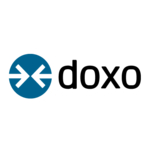Insights EMEA: what corporates want from their banks
The recent D+H conference in London has provided a platform to corporates to share their experiences of dealing with banks, vent their frustration, highlight the improvements and discuss the latest developments and the way forward.
Unsurprisingly, the main themes were standardisation, automation and the reduction of complexity.
The panellists – representatives of Hilton Worldwide, Ingersoll Rand, Bank of America Merrill Lynch (BAML) and Standard Bank – and the audience seemed to be in agreement that technology could and should help with standardisation pains.
Standardisation
Whilst the Electronic Bank Account Management (eBAM) initiative did not work out, it was a valiant attempt to automate a range of activities between banks and their corporate clients.
Swift was the major driving force behind the initiative. Its central utility for eBAM was piloted in 2011 and there was much expectation in the market for a viable multibank repository for storing eBam messaging data would be commercially available. However, this did not materialise and the investment in the utility was frozen a couple of years later.
Meliosa O’Byrne, treasury operations manager at Ingersoll Rand, comments that “files are sent in different formats and there are different fields standards for various countries and even for the same banks in various countries! Technology is key for us to be able to adjust to, and deal with, this variety.”
David Robinson, executive head of payments and collections products, Standard Bank, agrees. “Standardisation is something we are struggling with in Africa. It is so divers. The differences are especially broad when it comes to global versus regional banks.” However, he adds that the industry should avoid the “one size fits all” approach.
Sarah Billings, MD, head of global payments and deposits platforms at BAML, observes that gradually “things are getting better”. The adoption of international standards is on the rise, “but it won’t happen overnight”. She points to Europe and SEPA as a case in point.
And it is important to have standardisation on both origination and receivable sides, she adds.
To “mitigate standardisation pains” BAML has partnered with regional and local banks in those locations where it does not have direct presence. The customer-facing solution looks just like the BAML one, Billings explains, but the back-end is integrated with the partner bank that does the clearing.
Complexity
BAML’s Billings comments that new channels and new payment types are adding to the complexity – mainly due to the fact that the old ones are “never decommissioned” by the bank (unless the regulations, such as SEPA, require it).
“Simplify things!” Hilton’s senior director, treasury, calls on banks. “How many steps in payments can a corporate take out of the process to make it more efficient and cost-effective?”
Corporates shouldn’t need to maintain large IT departments. “Our ERP is PeopleSoft. So we hope that when banks deal with it, it is straightforward. But instead all we hear is that it will take a few months to figure out how our ERP will work with their systems,” he laments.
“We don’t care how it is done. We don’t care if it is blockchain or ACH or anything else. We want your machines to talk to our machines in a straightforward, secure and cost-effective way,” he tells banks.
Transparency and knowledge sharing
From the Ingersoll Rand team a request to banks is to be more transparent. “Tell us early on what’s going on,” O’Byrne says.
Also, she calls for more knowledge sharing. Whilst Ingersoll Rand has a team of six people in its Dublin office, a multinational bank has hundreds of specialists, she observes.
“Educate us, give us the knowledge you have to help us deal with KYC, specifics of different countries and so on – that will really help us.”
The importance of workflows
“No payment is done in isolation,” says BAML’s Billing. “Payment settlement is commoditised, so any corporate bank can do it. But what is really important is the workflow.
“A client wants to see the reporting and the data about the payment. So when a bank is building a new platform, it needs to create a symbiotic environment. Workflow is absolutely key,” she states.
“Banks are like traffic cops or translators at the United Nations,” bringing coherency, order and organisation as well as directing the influx of data that comes in all shapes, sizes and standards.
And what about corporate banks’ pains? This was discussed too at the event. Click here for all the highlights.










































